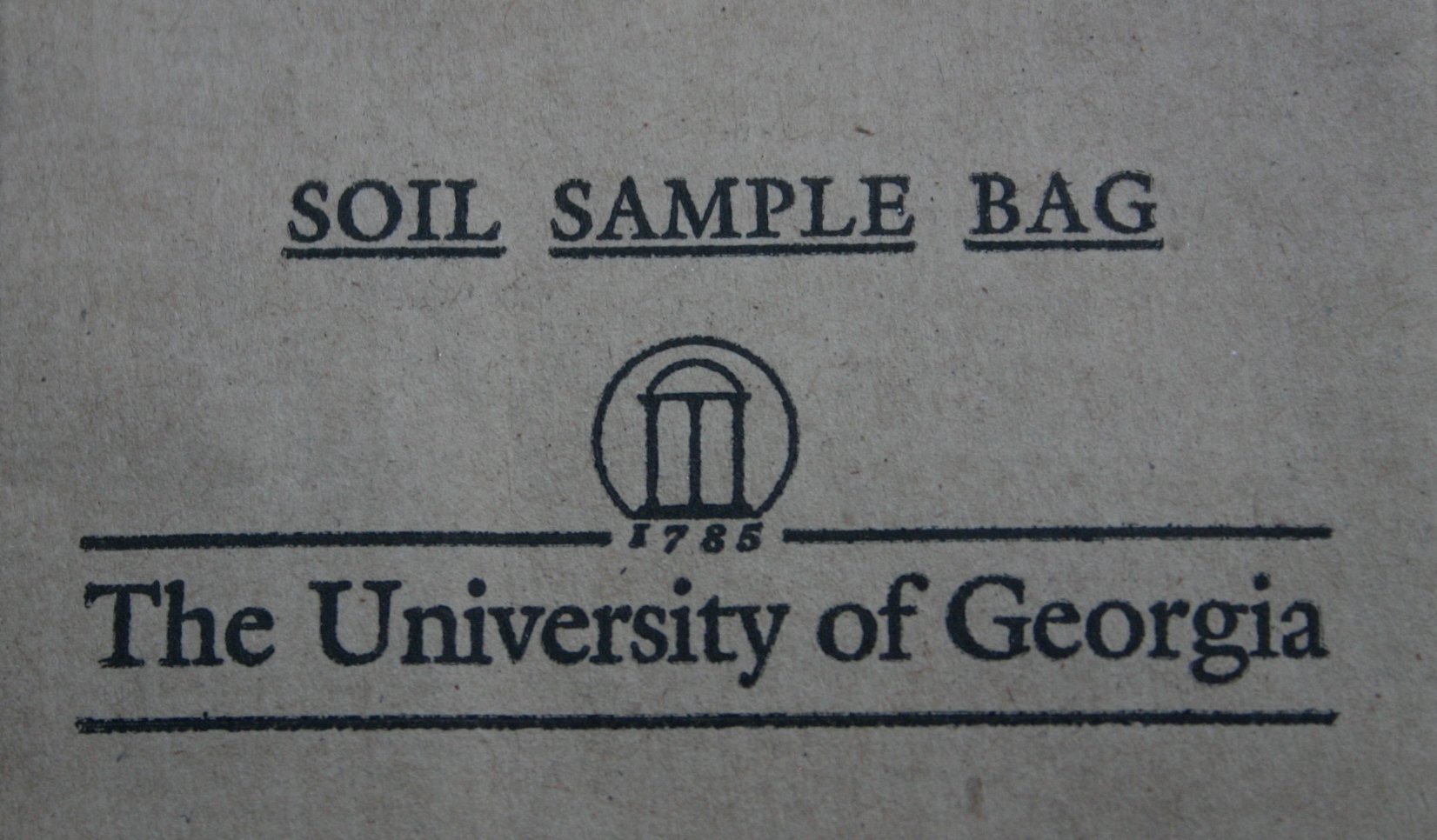How to Soil Test

If the word TEST gives you the fantods, contemplate a test that is simple to take, doesn’t reflect on your intelligence and has no wrong answers. Consider performing a soil test on your landscape.
Click here to order a soil test kit ($20, all postage paid)
Or call your local University of Georgia Extension office at 1-800-ASKUGA-1 to get details on lower priced options.
WHY SOIL TEST? Because it saves you money; it’s as simple as that. You see, I learned in high school that if a chemical solution is too acid or alkaline, the reaction you expect won’t occur. What is happening with fertilizer at your plants’ root tips? A chemical reaction, sure enough, and if the soil is too acid or too alkaline your hungry plants won’t be able to feed themselves.
One of the most import facts a soil test provides is the soil pH. What’s pH? It is a measurement of the acidity or alkalinity of a solution, expressed as a number between 1 and 14. At the mid-point, 7 denotes neutrality. A pH number below 7 indicates acidity while a number from 7 to 14 points out alkalinity.
Most plants like to grow in soil that is slightly acid: 6.0 or thereabouts. Some plants, like azaleas, blueberries and potatoes thrive in soil with a pH between 5.0 and 6.0.
Back to the chemical reaction, though. If your soil pH is 5.5, half of the fertilizer you apply can’t be absorbed by your plants.
And just for emphasis, let’s repeat it: If your soil is too acid, fifty percent of the fertilizer you purchase does nothing for your plants. The necessary chemical reaction just won’t happen. Now that I have your attention, let’s learn how to perform a soil test.
TAKING THE SAMPLE It’s really pretty simple. The only tools you need are a clean bucket and a shovel or trowel. Stand in your landscape and observe how many areas have different soil or soil that hasn’t been treated like the rest of the yard.
In our example landscape we have a vegetable garden that has been tilled and amended yearly. Soil there is different from the rest of the yard. The azalea bed in the back corner is different too. It has never been limed and it has been fertilized repeatedly with cottonseed meal.
The front and back lawns, though, are growing in similar soil and both look healthy. Even though two different grasses are being cultivated, one representative soil sample is all that’s needed.
It’s a piece of cake to collect a representative sample of soil from each area. Just wander about each one separately and collect five to ten four-inch deep plugs of dirt. Don’t just scoop soil from on top of the earth. Stab your trowel or shovel into the ground and bring up soil from the root zone of the plants.
Place the plugs from an area in your bucket, mix them thoroughly and remove any worms, stones or plant matter. Scoop out a pint of soil, pour it into a plastic bag and label its source. Repeat for each other area.
HAVING YOUR SOIL TESTED Once the samples have been collected you have two ways to test it. You could buy a soil test kit from a nursery and do it yourself. While this may be appealing, the results can be hard to pin down. How can one tell if the chemical color is reddish-orange or orangish-red when red clay soil is being tested?
A better choice is to use the University of Georgia Soils Lab (see forms above). The million-dollar state laboratory will test your soil and will send you a nice report detailing the current levels of nutrients in the soil, its pH and specific recommendations for the fertilizers you should apply.
There it is: a test guaranteed to save you money, calm your nerves and maintain your dignity … and you can finish it in less than an hour!
MORE INFORMATION
Using Organic Fertilizers Instead

soil sample bag

















